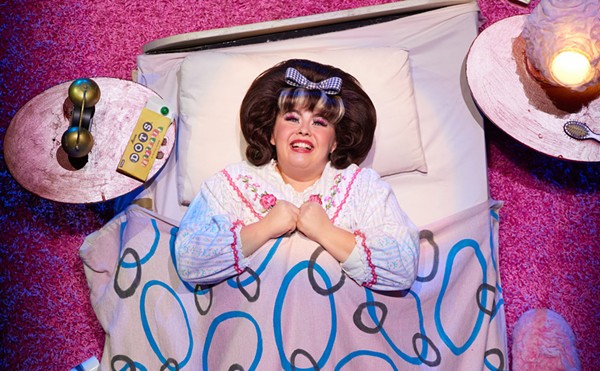Half a century ago the Abstract Expressionist painters flourished to no small degree because New York art dealer Leo Castelli fronted art supplies and rent money. Castelli bought their works as investments while his insight brewed into high-culture capital. In the 1980s and ’90s, Mary Boone was reputed to be one of the last NYC dealers to exert total control over her stable. Signing artists under exclusive contract, she decided who would be the lucky ones to exhibit when and if she chose. Since then, dealers have lost their tyrannical clout, and artists have looked to other outlets as the gallery system has fallen into decline. In San Antonio, a city unusually rich in art, it hardly exists at all.
“Trans/Action,” at the Guadalupe Cultural Arts Center, assembles works by Kimberly Aubuchon, Margarita Cabrera, Máximo González, and Ester Partegàs, four artists whose concerns range from making money from art to, in the case of González, making art out of money.
González was born in Paraná, Entre Ríos, Argentina, and is now based in Mexico City. His concerns for recycling and questions about the placement of value are on display in tapestries woven of bank notes, most often Mexican pesos that were removed from circulation during the oil crisis in the 1970s. Cut into thin strips and glued together to form flat strings of paper, the woven money is transformed into wall hangings. Their rich textures evoke handmade twisted yarns, or braided marquetry. The money strips are selected to form subtle patterns that, when viewed from a distance, are sometimes more felt than seen. Smaller pieces cascade loose strings onto the floor from their vertical sides. Larger works, made from clipped edges of notes and almost devoid of engraving, undulate on the wall like exaggerated fluid waves, or passion-tossed blankets. The work is unabashedly sensual, made for the eyes. But González is as much agitator as voluptuary. The destruction of currency questions the viewer’s faith in monetary worth through a pun on the market — exchanging money for aesthetic pleasure.
Cabrera, born in Monterrey, Mexico, now resides in El Paso. Her current project Mexico Abre La Boca, a taco truck containing handmade baskets, seems at first glance to lack the simple aesthetic impact of her other recent works, such as the ceramic tractor on view at the McNay. But the taco truck is both installation work and economic model. Melding craft traditions and corporate capitalism, it is a sales platform for Florezca, a registered business founded by Cabrera to train Latin American immigrants in traditional Mexican folk arts. Metalworking in the style of Los Tenangos, Hidalgo, and basketry made following the traditions of the Rarámuri in the Sierra Madre are used to make craft-based artworks designed by Cabrera in tandem with the Florezca artisans, who derive fair wages and profit from the venture. In all fairness, when seen as a static art installation dry-docked in the gallery, the taco truck/art stand is not at its best. Parked in an empty lot opposite Austin’s Arthouse during the Texas Biennial opening weekend, it shined. When at work the little metal stand is taken literally as a craft vendor, which of course it is. This is art that isn’t comfortable living only as metaphor. But out on the street, it chuckles with defiance.
Digitally collaged photographs by New York-based Partegàs, who was born in Spain, seem at first the most stable pieces in the show. Not questioning their own identities, they comment on the world instead. Street scenes of fashion shoppers are overlaid with spray-can smears and, likening advertising to vandalism, what seem to be paper garment tags. It all blends together in a mash-up of graffiti and street glamour. But though screaming with message, the photo-collages are abstract, painterly in an Ab-Ex way, very much themselves the object of desire.
Aubuchon, the proprietor of the popular alternative space Unit B in SA, has created a full-scale double of her gallery. Or has she? The room constructed in the gallery seems the same size, with a window drawn in to represent the original at the Steiren Street house. Behind the walled room is a mock-up of the outdoor hangout spot, complete with fire pit and beer tip jar for the small gallery’s overflow. Inside, what appears to be a group show is in progress, but it doesn’t look like Unit B. It is much more inhabited, filled with furniture. It feels much more domestic, more like what is on the other side of the door — in Aubuchon’s living space. This is double vision, the art on view is from her personal collection, pieces bought or traded for from shows in the public room of her house, and gifts. In some ways this is the most satisfying part of the exhibit, this peek into private, but shared, space.
Trans/Action
Free
Noon-5pm Mon-Sat
Guadalupe Gallery, 723 S Brazos
(210) 271-3151, guadalupeculturalarts.org
On view through June 25
















